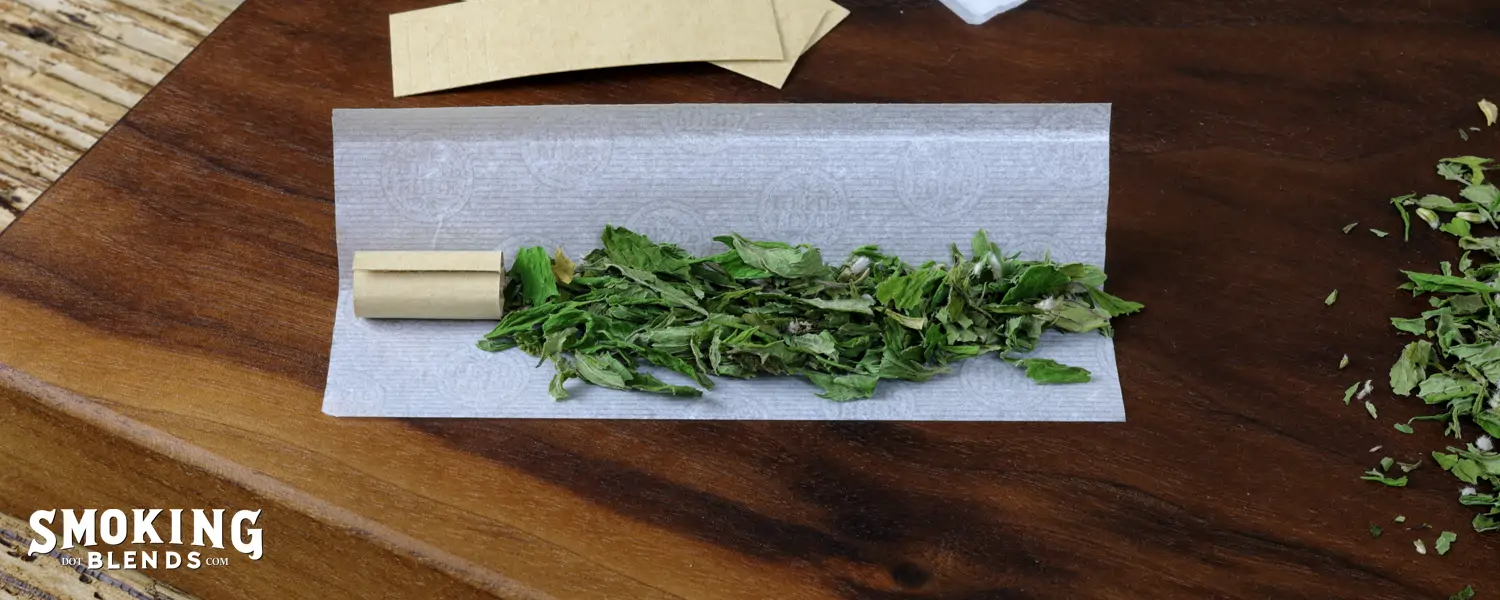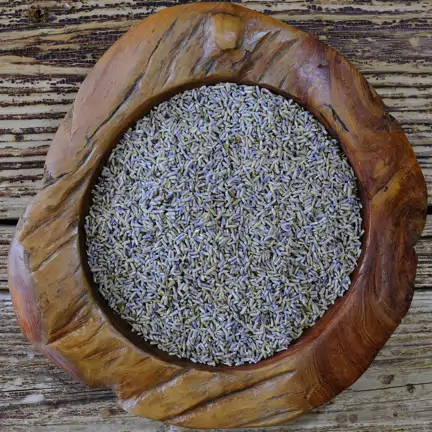
A simple and natural program that may help someone stop smoking tobacco habitually.
It only requires loose rolling tobacco (someone could gather this from their favorite brand of cigarettes), rolling papers, a cigarette rolling machine, lavender flowers, honeyweed leaf and lobelia leaf. Menthol smokers or some non-menthol smokers may also want to mix in some field mint leaf, as it has the strongest concentration of menthol among herbs in the mint family.
If you have never rolled your own cigarettes, don’t worry. You will get the hang of it quickly, or you may use cones if you are uncomfortable rolling them.
The purpose of this program is to assist someone in weaning off of tobacco and help minimize the eventual withdrawal symptoms.
Step One: Prepare yourself to start replacing tobacco.

The first part of the program will help the smoker become less familiar with the taste and flavor of smoking tobacco.
Start blending a small amount of lavender petals into your rolling tobacco. Lavender flowers are potent, so it requires very little to start with. As you become used to the flavor of lavender, start adding a little more. If lavender does not suit you, cornflowers can be used.
Step Two: Begin replacing the tobacco and weaning off of it.

Once you become accustomed to smoking the lavender-flavored tobacco, you can start adding in a small amount of honeyweed leaf. Honeyweed is a stimulant that may also aid in relaxation and has been used to help with symptoms of withdrawal. If honeyweed does not suit you, damiana may be used.
As you become more accustomed to smoking the mixture of tobacco, honeyweed and lavender, start adding in a higher percentage of honeyweed leaf.
There is no need to rush any of these steps, this is your program, and you control how fast or slowly it advances.
Step Three: Continue replacing the tobacco and begin getting accustomed to the herb that can help relive withdrawal symptoms.

Start adding a very small amount of lobelia leaf. Lobelia leaf contains lobeline which shares many characteristics with nicotine and has been shown to help with withdrawal symptoms from long-term habitual smoking. You must only add a very small amount because it can also dampen the effects of nicotine, which may increase your cravings for it.
Continue to reduce the percentage of tobacco and increase the amount of honeyweed leaf.
Step Four: Fully discontinue the use of tobacco.
When you feel ready, create a mixture of honeyweed leaf, lobelia leaf and a small amount of lavender petals. Slowly add in more lobelia leaf as you go forward.
If you are able to avoid smoking for intervals of a couple of hours, and you are feeling heavy cravings for tobacco, you can use a Step Three Mixture when things get bad. Adding a higher percentage of lobelia leaf to your non-tobacco mixture may also help. However, at this point, the goal is to completely quit smoking tobacco and not slip backwards. Most importantly, do not give up!
This is a simple program, in many cases, simplicity works best. The herbs in this program have no addictive qualities, so they will not aid in your dependency. You may choose to research and experiment with other herbs during the program or after to have something to smoke when you have a craving. Years of smoking can become habit-forming in more ways than one. It can also become a routine, having something you can go to that is not habit-forming can help fill that void.
There are many testimonials online from people who claim to have been able to wean themselves off tobacco with the help of natural herbs.
You can rid yourself of tobacco addiction, and you will if you keep trying!

I am happy to hear your feedback and I hope you found this content helpful. Please don’t forget I can also learn from you.